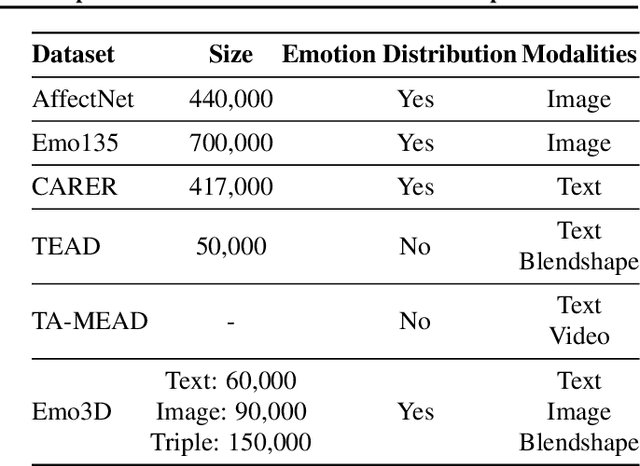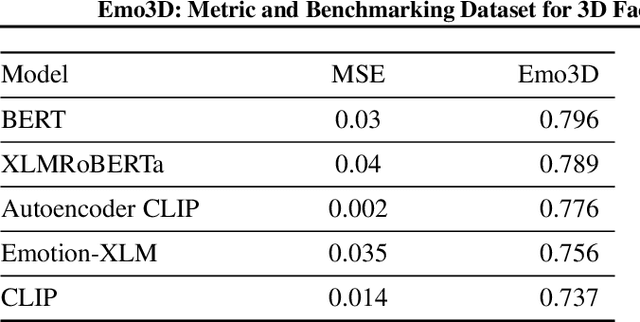Ehsaneddin Asgari
AI Innovation, Data:Lab Munich, Volkswagen AG
Ask in Any Modality: A Comprehensive Survey on Multimodal Retrieval-Augmented Generation
Feb 12, 2025Abstract:Large Language Models (LLMs) struggle with hallucinations and outdated knowledge due to their reliance on static training data. Retrieval-Augmented Generation (RAG) mitigates these issues by integrating external dynamic information enhancing factual and updated grounding. Recent advances in multimodal learning have led to the development of Multimodal RAG, incorporating multiple modalities such as text, images, audio, and video to enhance the generated outputs. However, cross-modal alignment and reasoning introduce unique challenges to Multimodal RAG, distinguishing it from traditional unimodal RAG. This survey offers a structured and comprehensive analysis of Multimodal RAG systems, covering datasets, metrics, benchmarks, evaluation, methodologies, and innovations in retrieval, fusion, augmentation, and generation. We precisely review training strategies, robustness enhancements, and loss functions, while also exploring the diverse Multimodal RAG scenarios. Furthermore, we discuss open challenges and future research directions to support advancements in this evolving field. This survey lays the foundation for developing more capable and reliable AI systems that effectively leverage multimodal dynamic external knowledge bases. Resources are available at https://github.com/llm-lab-org/Multimodal-RAG-Survey.
MorphBPE: A Morpho-Aware Tokenizer Bridging Linguistic Complexity for Efficient LLM Training Across Morphologies
Feb 02, 2025Abstract:Tokenization is fundamental to Natural Language Processing (NLP), directly impacting model efficiency and linguistic fidelity. While Byte Pair Encoding (BPE) is widely used in Large Language Models (LLMs), it often disregards morpheme boundaries, leading to suboptimal segmentation, particularly in morphologically rich languages. We introduce MorphBPE, a morphology-aware extension of BPE that integrates linguistic structure into subword tokenization while preserving statistical efficiency. Additionally, we propose two morphology-based evaluation metrics: (i) Morphological Consistency F1-Score, which quantifies the consistency between morpheme sharing and token sharing, contributing to LLM training convergence, and (ii) Morphological Edit Distance, which measures alignment between morphemes and tokens concerning interpretability. Experiments on English, Russian, Hungarian, and Arabic across 300M and 1B parameter LLMs demonstrate that MorphBPE consistently reduces cross-entropy loss, accelerates convergence, and improves morphological alignment scores. Fully compatible with existing LLM pipelines, MorphBPE requires minimal modifications for integration. The MorphBPE codebase and tokenizer playground will be available at: https://github.com/llm-lab-org/MorphBPE and https://tokenizer.llm-lab.org
AIMA at SemEval-2024 Task 10: History-Based Emotion Recognition in Hindi-English Code-Mixed Conversations
Jan 19, 2025

Abstract:In this study, we introduce a solution to the SemEval 2024 Task 10 on subtask 1, dedicated to Emotion Recognition in Conversation (ERC) in code-mixed Hindi-English conversations. ERC in code-mixed conversations presents unique challenges, as existing models are typically trained on monolingual datasets and may not perform well on code-mixed data. To address this, we propose a series of models that incorporate both the previous and future context of the current utterance, as well as the sequential information of the conversation. To facilitate the processing of code-mixed data, we developed a Hinglish-to-English translation pipeline to translate the code-mixed conversations into English. We designed four different base models, each utilizing powerful pre-trained encoders to extract features from the input but with varying architectures. By ensembling all of these models, we developed a final model that outperforms all other baselines.
AIMA at SemEval-2024 Task 3: Simple Yet Powerful Emotion Cause Pair Analysis
Jan 19, 2025Abstract:The SemEval-2024 Task 3 presents two subtasks focusing on emotion-cause pair extraction within conversational contexts. Subtask 1 revolves around the extraction of textual emotion-cause pairs, where causes are defined and annotated as textual spans within the conversation. Conversely, Subtask 2 extends the analysis to encompass multimodal cues, including language, audio, and vision, acknowledging instances where causes may not be exclusively represented in the textual data. Our proposed model for emotion-cause analysis is meticulously structured into three core segments: (i) embedding extraction, (ii) cause-pair extraction & emotion classification, and (iii) cause extraction using QA after finding pairs. Leveraging state-of-the-art techniques and fine-tuning on task-specific datasets, our model effectively unravels the intricate web of conversational dynamics and extracts subtle cues signifying causality in emotional expressions. Our team, AIMA, demonstrated strong performance in the SemEval-2024 Task 3 competition. We ranked as the 10th in subtask 1 and the 6th in subtask 2 out of 23 teams.
CLASP: Contrastive Language-Speech Pretraining for Multilingual Multimodal Information Retrieval
Dec 17, 2024Abstract:This study introduces CLASP (Contrastive Language-Speech Pretraining), a multilingual, multimodal representation tailored for audio-text information retrieval. CLASP leverages the synergy between spoken content and textual data. During training, we utilize our newly introduced speech-text dataset, which encompasses 15 diverse categories ranging from fiction to religion. CLASP's audio component integrates audio spectrograms with a pre-trained self-supervised speech model, while its language encoding counterpart employs a sentence encoder pre-trained on over 100 languages. This unified lightweight model bridges the gap between various modalities and languages, enhancing its effectiveness in handling and retrieving multilingual and multimodal data. Our evaluations across multiple languages demonstrate that CLASP establishes new benchmarks in HITS@1, MRR, and meanR metrics, outperforming traditional ASR-based retrieval approaches in specific scenarios.
TuringQ: Benchmarking AI Comprehension in Theory of Computation
Oct 09, 2024Abstract:We present TuringQ, the first benchmark designed to evaluate the reasoning capabilities of large language models (LLMs) in the theory of computation. TuringQ consists of 4,006 undergraduate and graduate-level question-answer pairs, categorized into four difficulty levels and covering seven core theoretical areas. We evaluate several open-source LLMs, as well as GPT-4, using Chain of Thought prompting and expert human assessment. Additionally, we propose an automated LLM-based evaluation system that demonstrates competitive accuracy when compared to human evaluation. Fine-tuning a Llama3-8B model on TuringQ shows measurable improvements in reasoning ability and out-of-domain tasks such as algebra. TuringQ serves as both a benchmark and a resource for enhancing LLM performance in complex computational reasoning tasks. Our analysis offers insights into LLM capabilities and advances in AI comprehension of theoretical computer science.
Emo3D: Metric and Benchmarking Dataset for 3D Facial Expression Generation from Emotion Description
Oct 02, 2024



Abstract:Existing 3D facial emotion modeling have been constrained by limited emotion classes and insufficient datasets. This paper introduces "Emo3D", an extensive "Text-Image-Expression dataset" spanning a wide spectrum of human emotions, each paired with images and 3D blendshapes. Leveraging Large Language Models (LLMs), we generate a diverse array of textual descriptions, facilitating the capture of a broad spectrum of emotional expressions. Using this unique dataset, we conduct a comprehensive evaluation of language-based models' fine-tuning and vision-language models like Contranstive Language Image Pretraining (CLIP) for 3D facial expression synthesis. We also introduce a new evaluation metric for this task to more directly measure the conveyed emotion. Our new evaluation metric, Emo3D, demonstrates its superiority over Mean Squared Error (MSE) metrics in assessing visual-text alignment and semantic richness in 3D facial expressions associated with human emotions. "Emo3D" has great applications in animation design, virtual reality, and emotional human-computer interaction.
SuperPos-Prompt: Enhancing Soft Prompt Tuning of Language Models with Superposition of Multi Token Embeddings
Jun 07, 2024



Abstract:Soft prompt tuning techniques have recently gained traction as an effective strategy for the parameter-efficient tuning of pretrained language models, particularly minimizing the required adjustment of model parameters. Despite their growing use, achieving optimal tuning with soft prompts, especially for smaller datasets, remains a substantial challenge. This study makes two contributions in this domain: (i) we introduce SuperPos-Prompt, a new reparameterization technique employing the superposition of multiple pretrained vocabulary embeddings to improve the learning of soft prompts. Our experiments across several GLUE and SuperGLUE benchmarks consistently highlight SuperPos-Prompt's superiority over Residual Prompt tuning, exhibiting an average score increase of $+6.4$ in T5-Small and $+5.0$ in T5-Base along with a faster convergence. Remarkably, SuperPos-Prompt occasionally outperforms even full fine-tuning methods. (ii) Additionally, we demonstrate enhanced performance and rapid convergence by omitting dropouts from the frozen network, yielding consistent improvements across various scenarios and tuning methods.
Khayyam Challenge : Is Your LLM Truly Wise to The Persian Language?
Apr 09, 2024Abstract:Evaluating Large Language Models (LLMs) is challenging due to their generative nature, necessitating precise evaluation methodologies. Additionally, non-English LLM evaluation lags behind English, resulting in the absence or weakness of LLMs for many languages. In response to this necessity, we introduce Khayyam Challenge (also known as PersianMMLU), a meticulously curated collection comprising 20,192 four-choice questions sourced from 38 diverse tasks extracted from Persian examinations, spanning a wide spectrum of subjects, complexities, and ages. The primary objective of the Khayyam Challenge is to facilitate the rigorous evaluation of LLMs that support the Persian language. Distinctive features of the Khayyam Challenge are (i) its comprehensive coverage of various topics, including literary comprehension, mathematics, sciences, logic, intelligence testing, etc., aimed at assessing different facets of LLMs such as language comprehension, reasoning, and information retrieval across various educational stages, from lower primary school to upper secondary school (ii) its inclusion of rich metadata such as human response rates, difficulty levels, and descriptive answers (iii) its utilization of new data to avoid data contamination issues prevalent in existing frameworks (iv) its use of original, non-translated data tailored for Persian speakers, ensuring the framework is free from translation challenges and errors while encompassing cultural nuances (v) its inherent scalability for future data updates and evaluations without requiring special human effort. Previous works lacked an evaluation framework that combined all of these features into a single comprehensive benchmark. Furthermore, we evaluate a wide range of existing LLMs that support the Persian language, with statistical analyses and interpretations of their outputs.
M$^3$Face: A Unified Multi-Modal Multilingual Framework for Human Face Generation and Editing
Feb 04, 2024Abstract:Human face generation and editing represent an essential task in the era of computer vision and the digital world. Recent studies have shown remarkable progress in multi-modal face generation and editing, for instance, using face segmentation to guide image generation. However, it may be challenging for some users to create these conditioning modalities manually. Thus, we introduce M3Face, a unified multi-modal multilingual framework for controllable face generation and editing. This framework enables users to utilize only text input to generate controlling modalities automatically, for instance, semantic segmentation or facial landmarks, and subsequently generate face images. We conduct extensive qualitative and quantitative experiments to showcase our frameworks face generation and editing capabilities. Additionally, we propose the M3CelebA Dataset, a large-scale multi-modal and multilingual face dataset containing high-quality images, semantic segmentations, facial landmarks, and different captions for each image in multiple languages. The code and the dataset will be released upon publication.
 Add to Chrome
Add to Chrome Add to Firefox
Add to Firefox Add to Edge
Add to Edge